Changing a phone – for many of us, it’s a moment eagerly awaited for months, if not years. For others, it’s a source of much stress – transferring data, contacts, learning a new interface, changing habits regarding size. Undoubtedly, there’s also the anxiety related to wanting to keep the new acquisition in the best – possibly flawless – condition for as long as possible.
It’s obvious to choose a case that will fulfill its role – that is, protect the phone – while also pleasing the eye and not overly spoiling its lines. The choice is relatively simple – manufacturers go to great lengths to ensure the options are truly varied and tailored to many tastes and needs. We make a decision, buy, put it on – topic closed.
The situation is somewhat different when it comes to tempered glass. Their role is to protect the screen from unwanted scratches, impacts, and falls – some might argue that it’s an element more important than the case itself. The choice, as with cases, is also vast. From the cheapest options from the Middle Kingdom to the highest quality models with a touch of sapphire finish. However, in this situation, making a decision and purchasing is only half – perhaps even less – of the success. The most expensive glass on the market will be of no use to us if we fail during its installation. 🙂
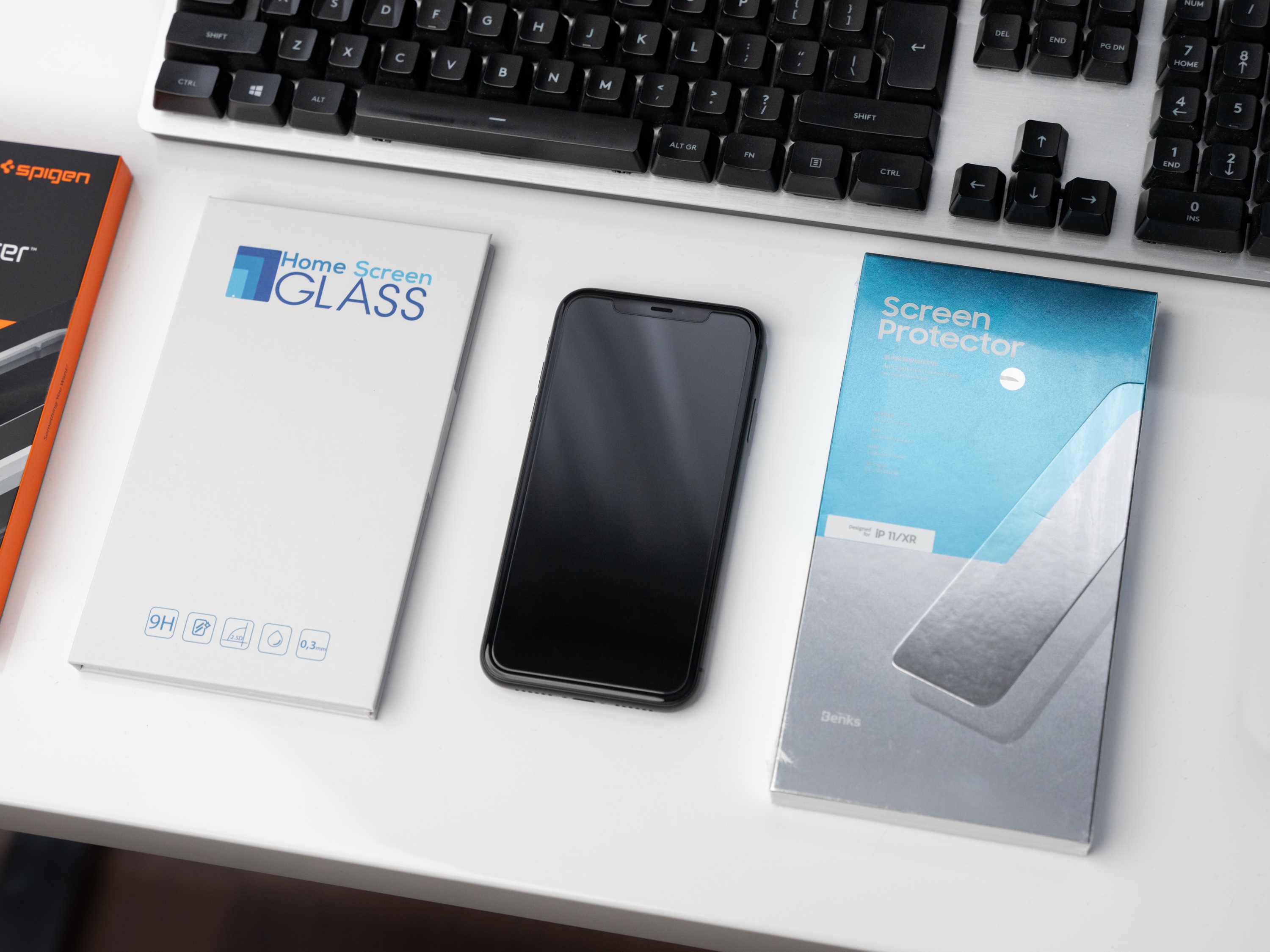
A fully symmetrical, even, and clean application of screen protection is not as difficult a procedure as it might seem – it only requires a bit of manual dexterity, a dusted piece of desk/table to perform the “procedure,” and a few minutes of moderate focus. A modest price, the payment of which will reward us with screen protection in a way close to factory and as non-invasive as possible.
Let’s begin!
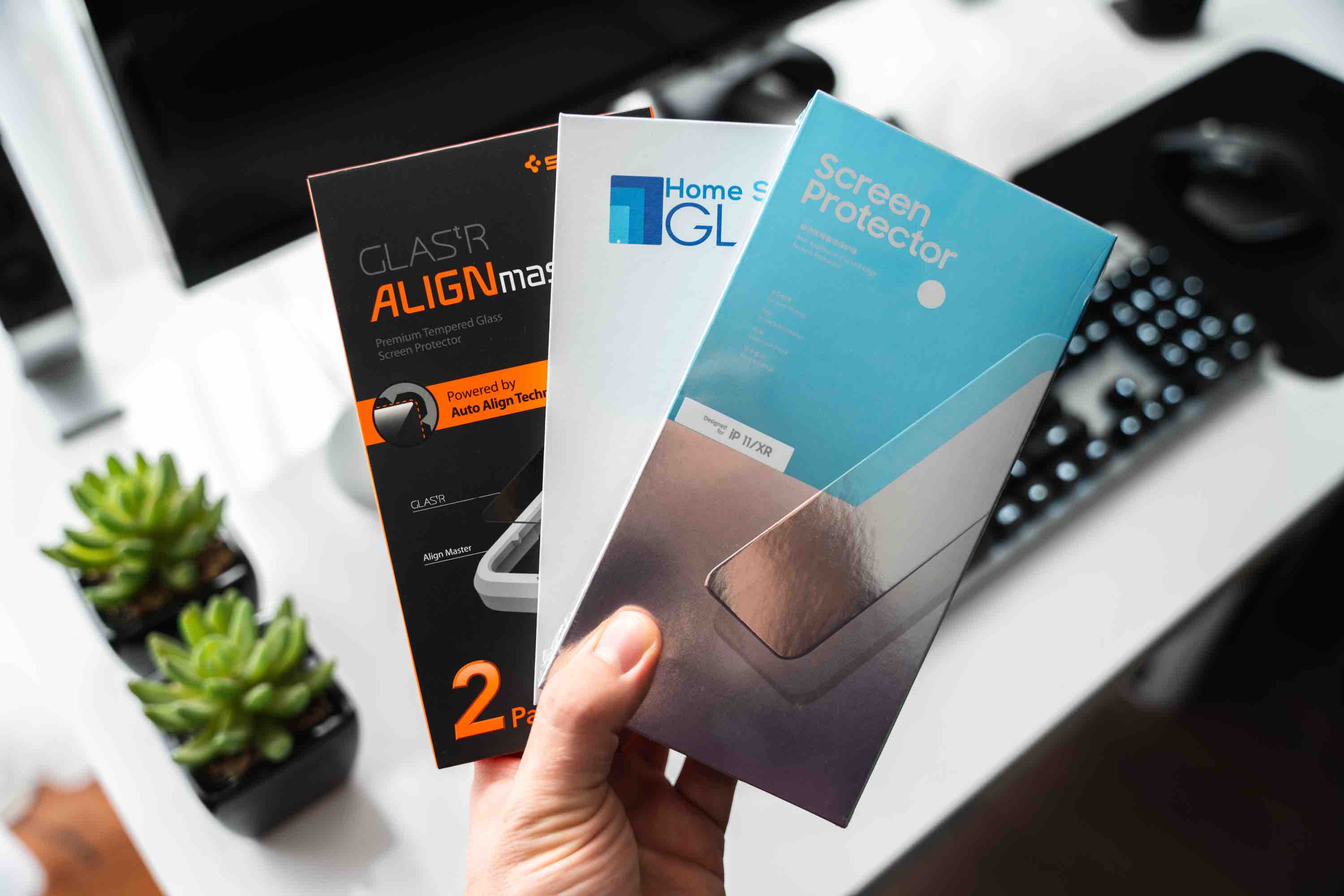
The set of accessories we find in the packaging with the glass usually depends on the price we paid for the protection. In the case of cheaper options, it’s futile to look for anything other than a set of dry and alcohol-soaked wipes and a set of stickers to “dust” the screen. On the other hand, higher-end options usually include a microfiber cloth (which is definitely more effective in cleaning the screen) and accessories designed to facilitate the installation process – including, for example, a mounting frame that allows you to place the phone in it, which helps maintain symmetry when applying the glass. For the purposes of this guide, however, we will go “all out,” opting for a fully manual installation – contrary to appearances, frames in some situations do more harm than good.
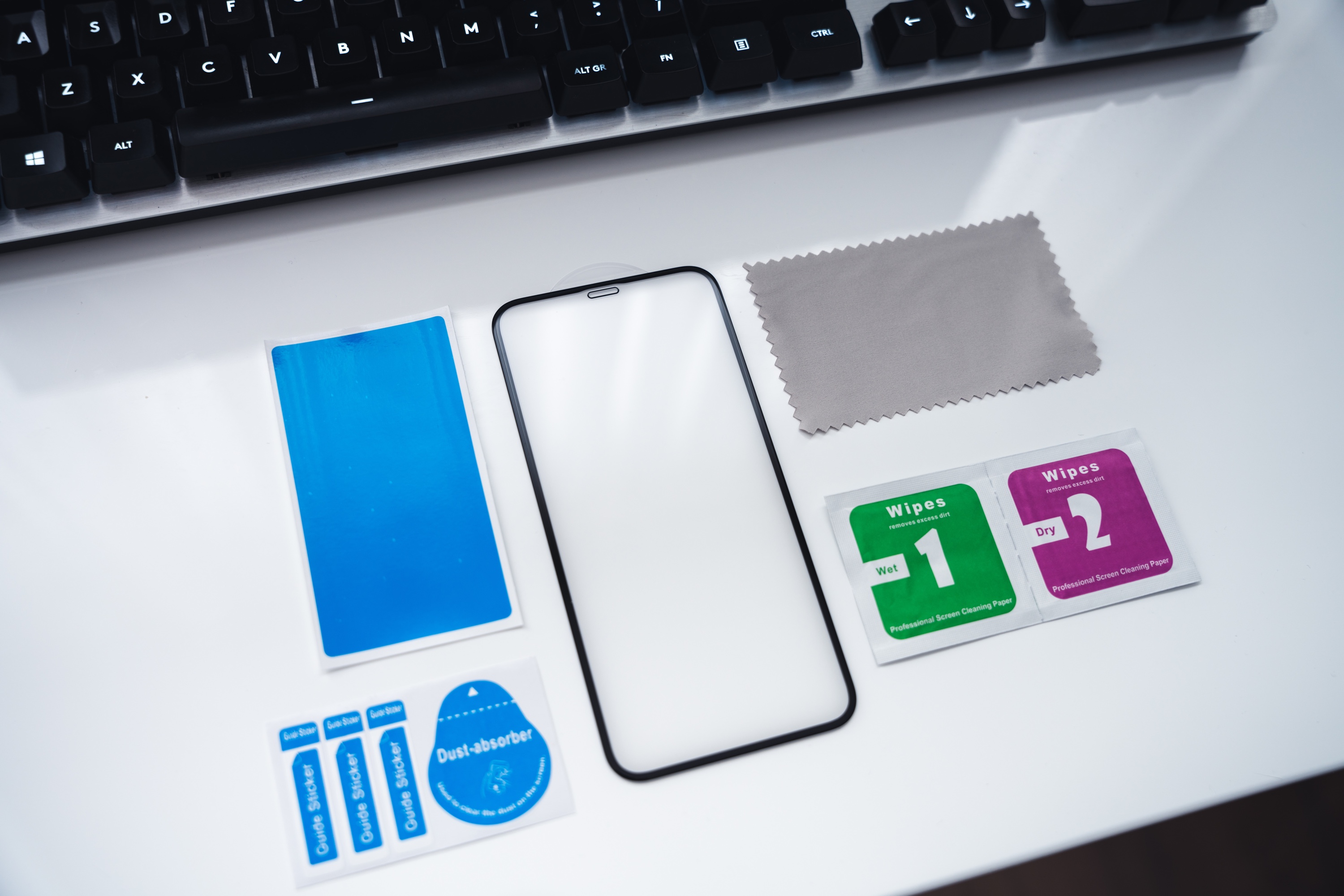
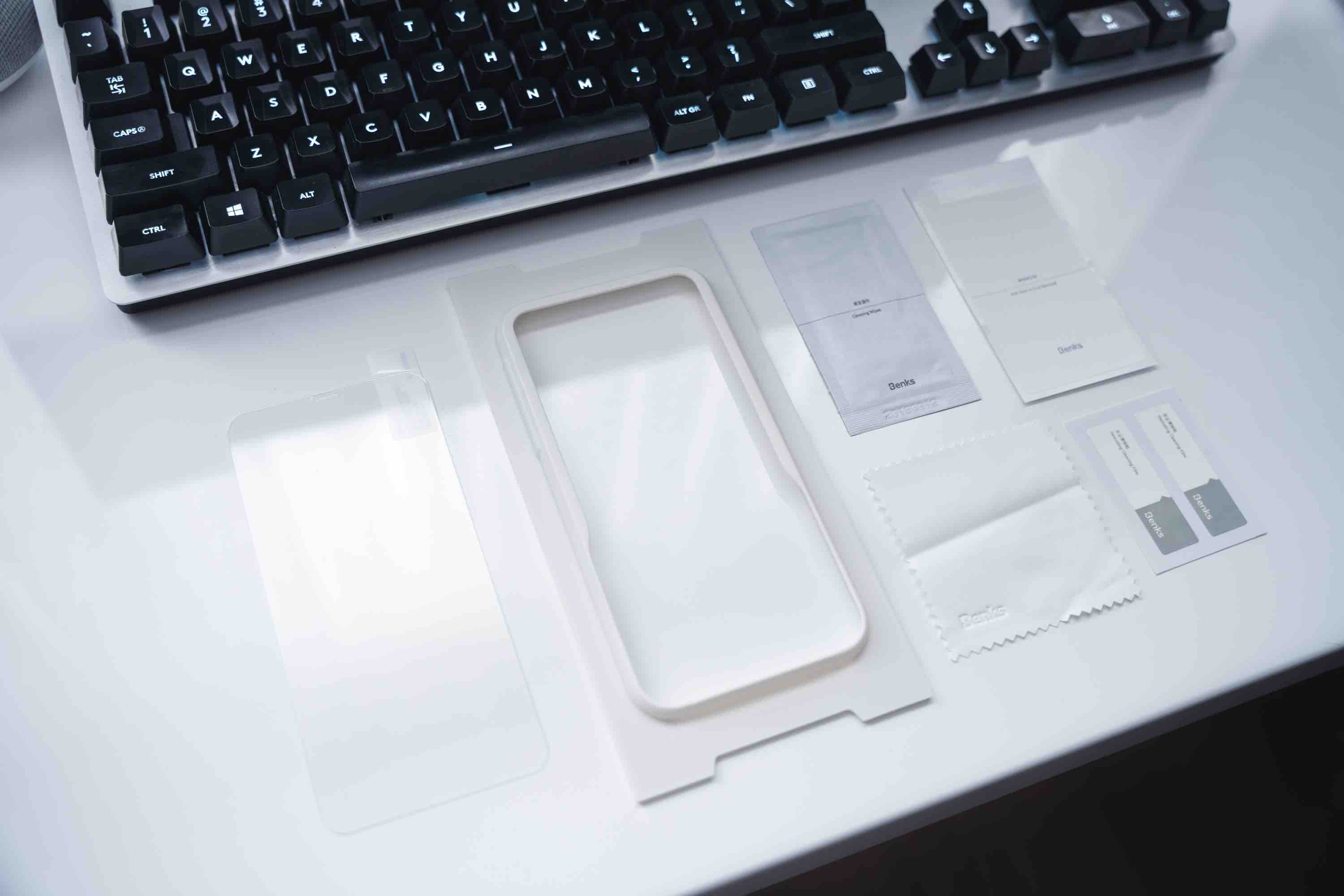
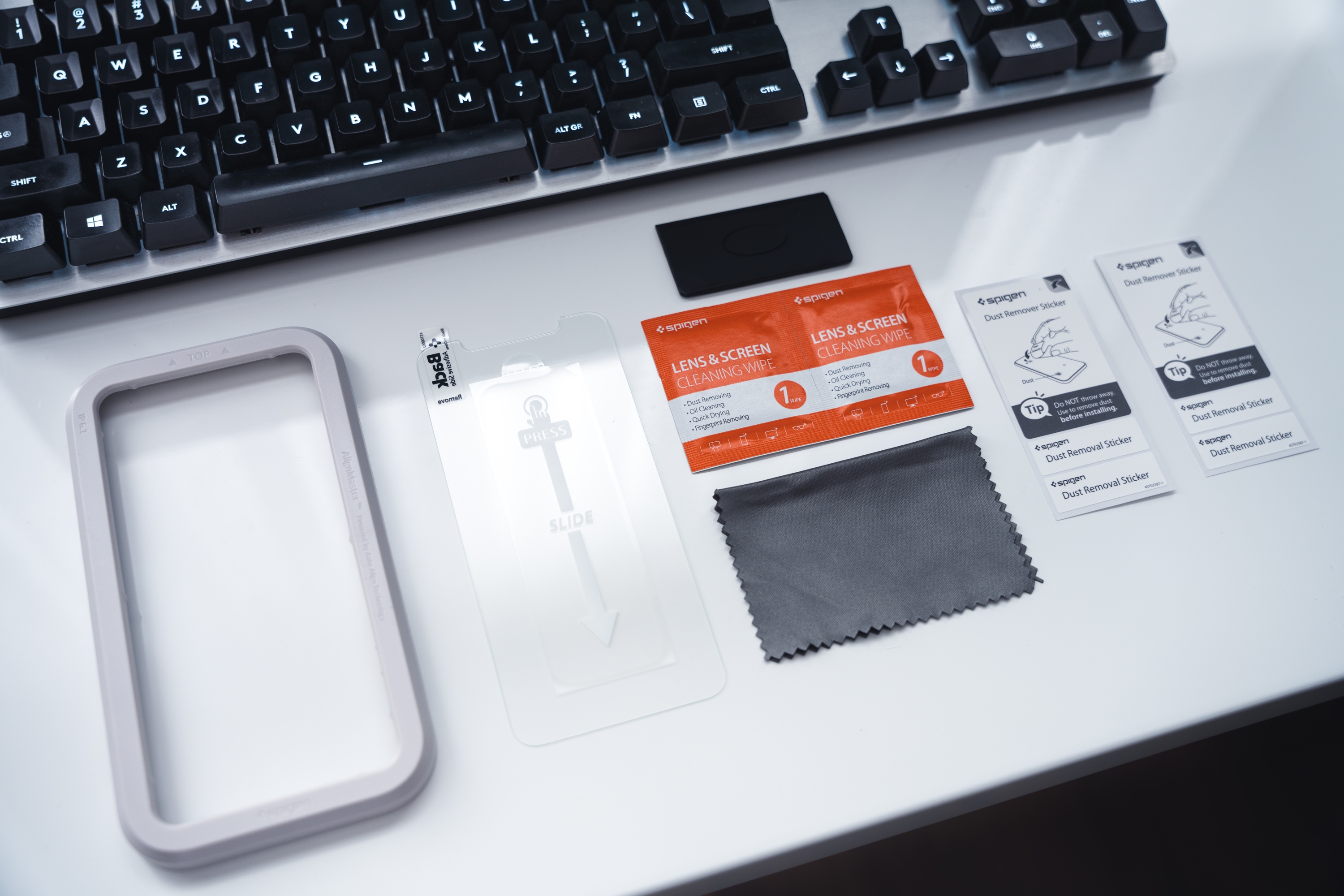
For many, the greatest difficulty may be maintaining the cleanliness of the installation. What good is it if the glass is applied perfectly straight, but numerous specks gather on its surface and the screen? Unfortunately, there is no magic wand that will eliminate every airborne speck 100% – however, wiping the surface with a damp cloth where we decided to install it will definitely help. A popular method is also performing the “procedure” of applying tempered glass in a steamed-up (for example, after a bath) bathroom – high air humidity will guarantee fewer contaminants floating aimlessly in the air, which in turn will translate into a longer “window” between removing the protective film from the glass and applying it to the clean screen.
A very common mistake that hinders the correct application of tempered glass is simply… the placement of the phone. Having it horizontally in front of you (on the longer side) allows you to grab the glass by the shorter sides, which guarantees a much more convenient way to maneuver the glass and makes it easier to hold. A seemingly silly thing, but in practice, it changes a lot.
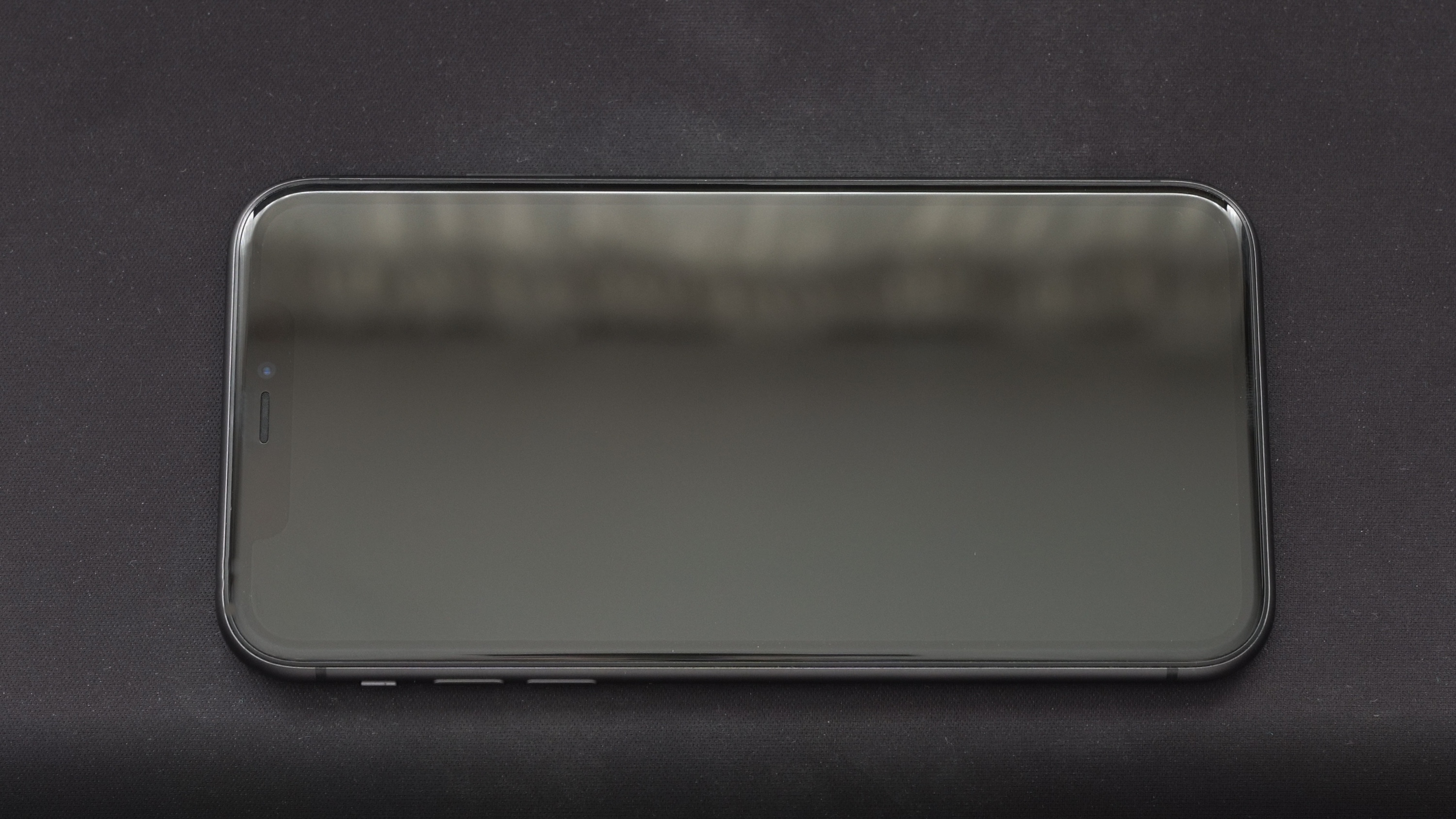
Another theoretically unnecessary step is… setting a bright lock screen wallpaper, which will clearly allow you to assess where the display ends and where the bezels begin. Currently, the vast majority of phone models are a black glass surface, on which it’s impossible to stick the glass “by eye,” hoping to hit the center. The illuminated edge of the display will give us a semblance of a reference point, thanks to which we will have a better chance of symmetrical installation. It’s also worth placing the glass on the screen “dry,” before removing the film – this will allow you to assess how you should “aim” in the final stage of installation.
Before proceeding directly to the application, you should take care to clean the screen as thoroughly as possible. An alcohol-soaked cloth will come in handy here. Don’t worry if numerous droplets of liquid remain on the screen after this stage – the set also includes its dry counterpart, which we use to wipe the damp surface. It’s very possible that despite this, the aforementioned dust particles will still be noticeable on the display – we try to remove them by “dragging” them with a cloth, preferably towards one edge. As mentioned earlier, microfiber cloths will definitely make the task easier, although they are not essential.
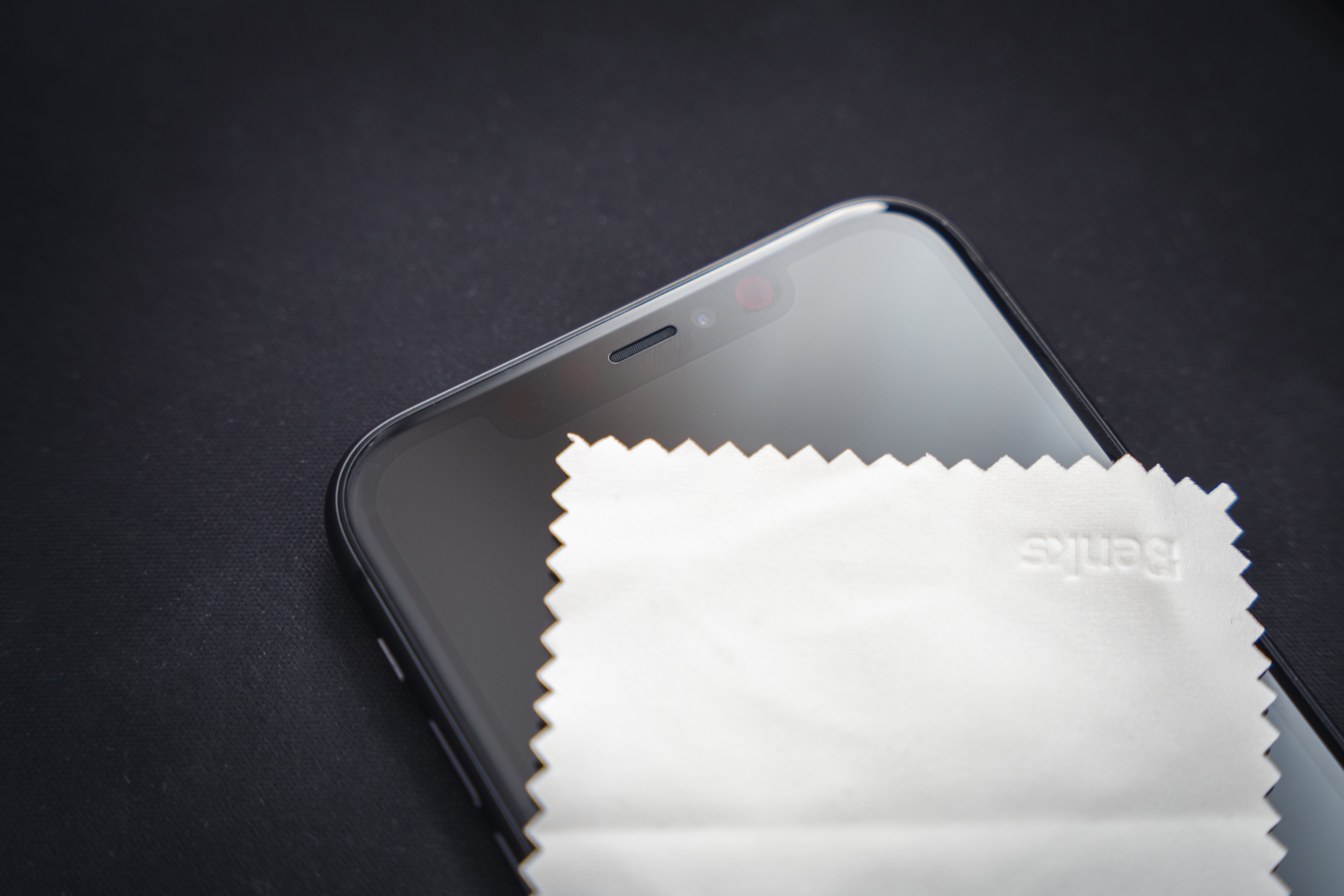
You probably noticed that the set with the glass included tiny, funny stickers. They are covered with a very thin adhesive layer – they are used to gently “tap” unruly dust particles that we were unable to force off the screen surface with a cloth. Simply apply it to the display, holding the other end with your fingers – the dust will stick to the sticker, leaving no trace on the screen.
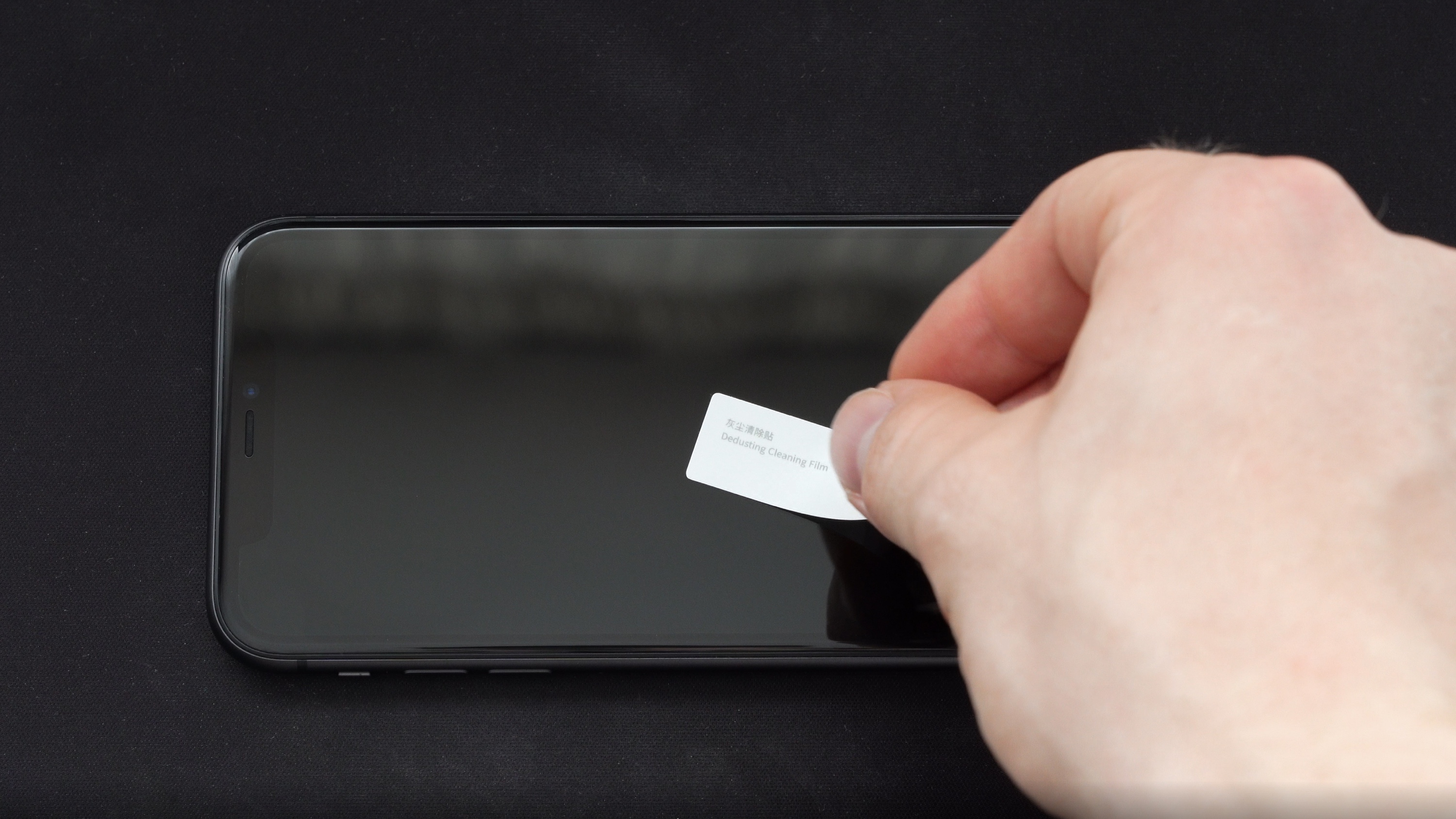
If the screen has already been cleaned, all that’s left is to press the lock button – this will wake up the screen – and then pull the tab of the protective film covering the adhesive layer of the glass. This should be done with a swift motion, without unnecessary delay – remember that every second of this stage is a chance for unwanted dust particles to fall on both the screen and the already exposed adhesive layer of the glass.
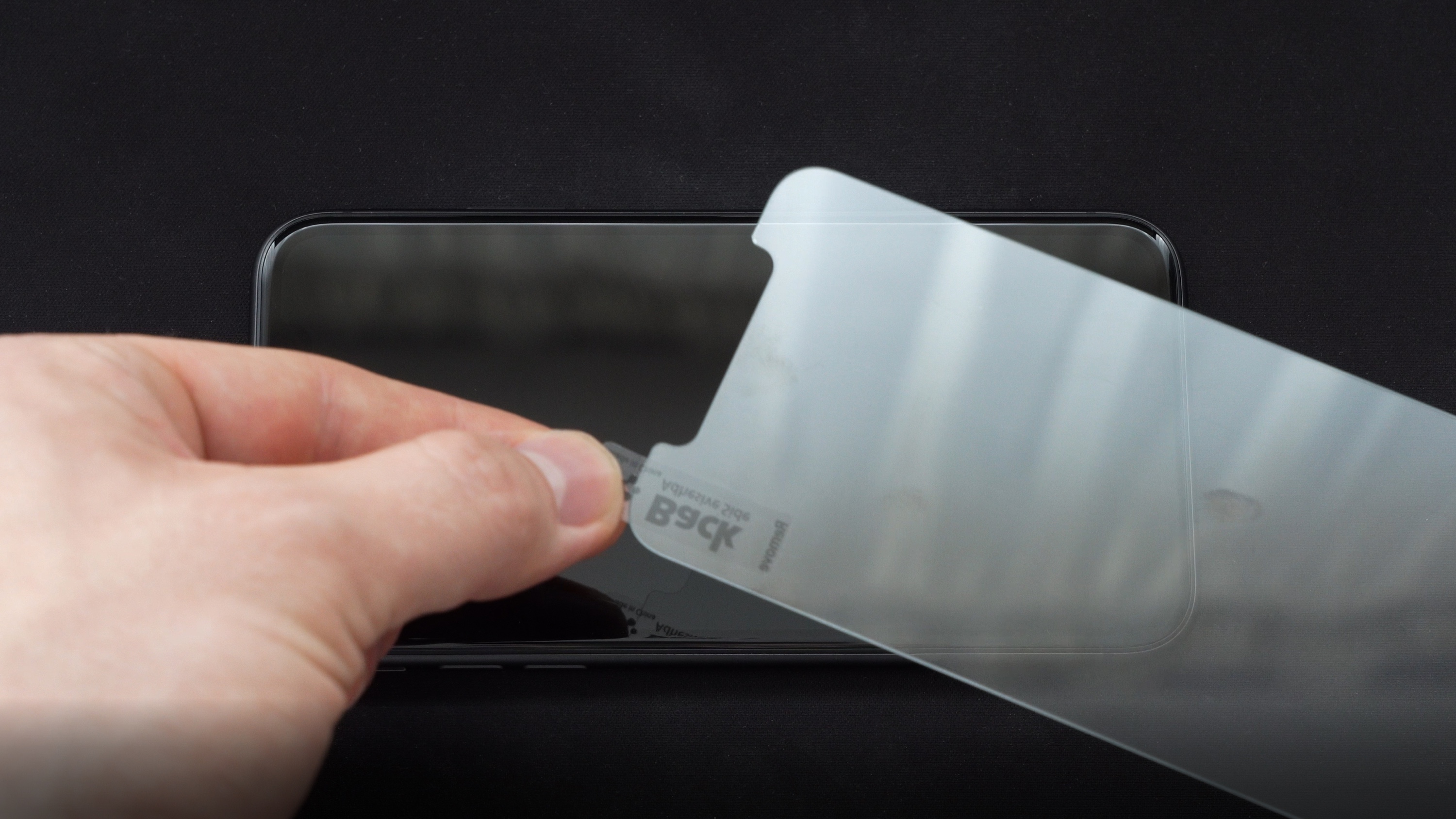
Holding the glass by the corners (most conveniently with your thumb and index finger), we apply it to the screen, starting from the top edge of the phone (the top – as the one with the speaker and cameras). We find the center of symmetry – so that each edge of the glass is at a roughly similar distance from the edge of the display. This requires the most focus during the entire process of applying tempered glass – it’s worth taking a moment to ensure that the distance of the glass to each edge of the screen is as close as possible. We gradually lower the bottom part of the glass, trying to maintain an even line of the glass in relation to the longer sides of the phone.
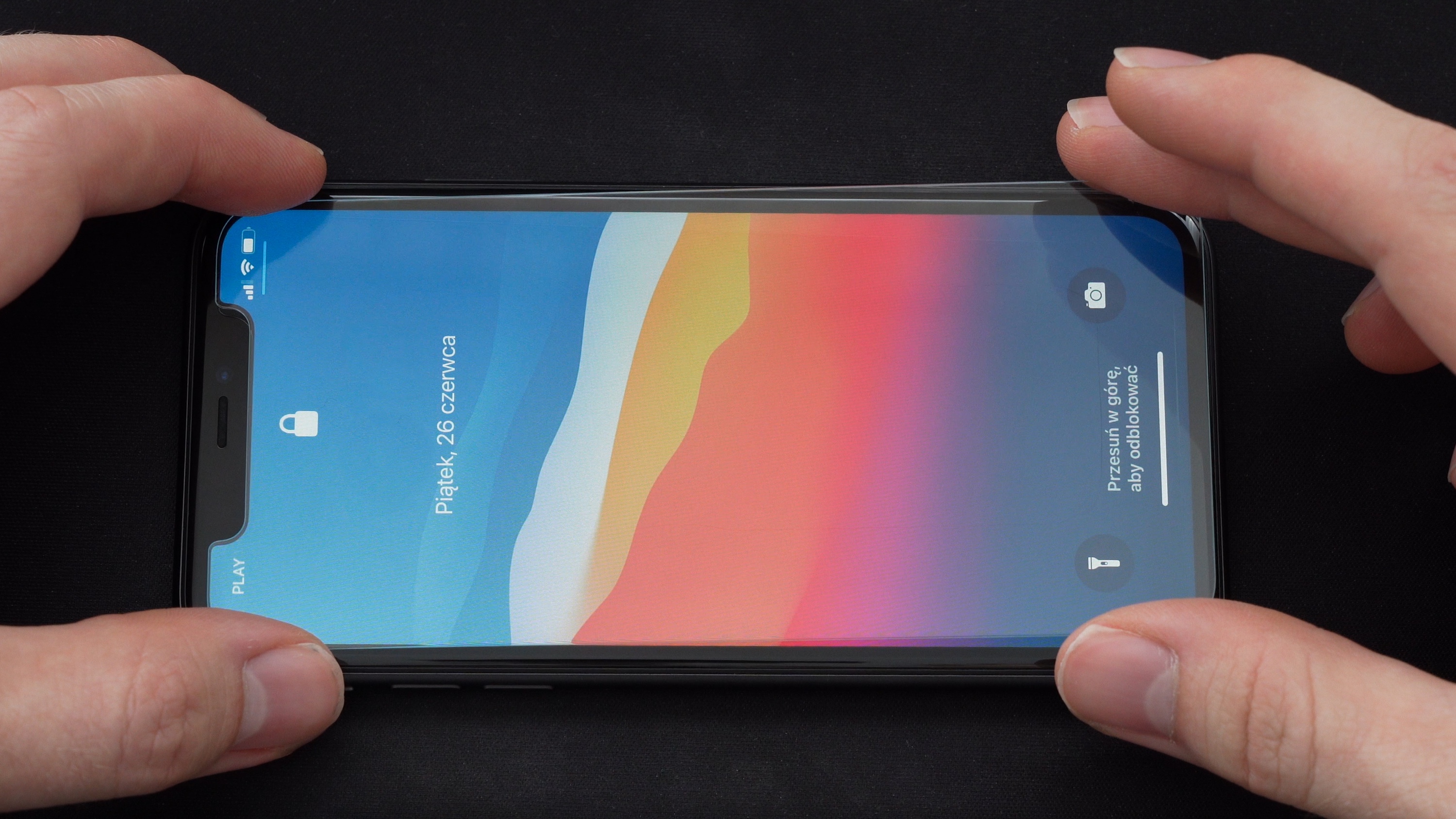
After the glass has fully settled, we can assess whether the result is satisfactory and whether any dust particles have gotten under the glass. If nothing like that has happened – gently press the glass, sliding your index finger along its length – which will bond the adhesive layer of the glass with the screen. In case of remaining air bubbles – push them out with a cloth/finger beyond the edge of the glass.
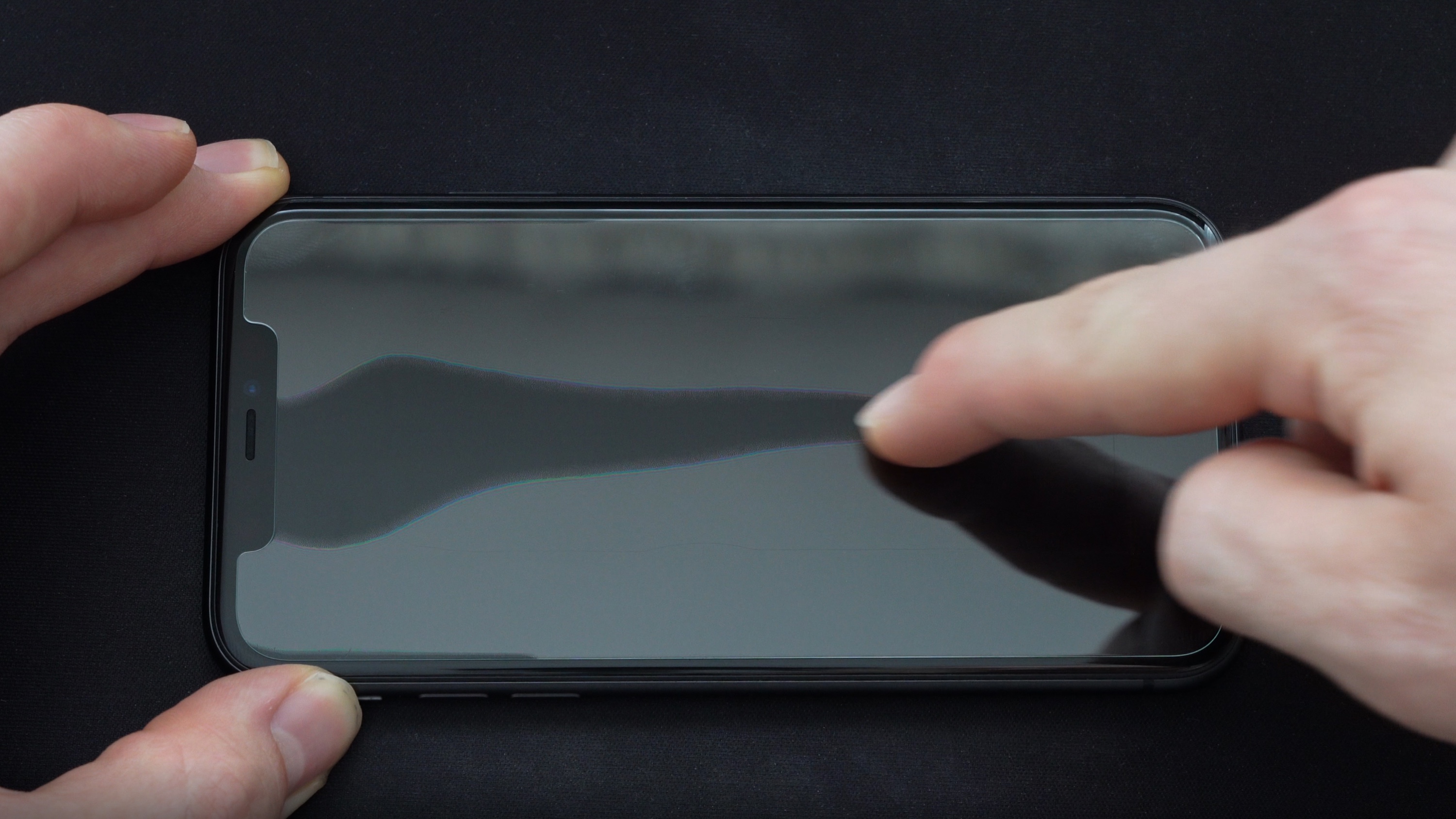
However, if the applied glass has “shifted” towards one of the edges more than we would like: in practice, you should not peel off already applied glass – bending it strongly may result in cracking, and it’s also easy to damage the edge of the adhesive layer by prying the glass with a fingernail. If, despite everything, you feel up to it, and the glass hasn’t “gripped” the screen strongly – you can gently pry it and move it, trying to detach it from the screen surface as delicately as possible. Again – waking up the display with a bright wallpaper will help, as it will highlight its edges and allow for a more accurate assessment of symmetry references.
The same situation applies to unfortunate dust particles that somehow ended up under the glass. You can attempt to gently pry the edge of the tempered glass with a fingernail (trying, however, not to get it too deep into the adhesive part of the glass) – and then slide in a second sticker, which we previously used to pick up dust from the bare screen, trying to catch the unwanted object on the display surface with the adhesive. This maneuver, however, requires surgical precision – it’s very easy to damage the glass itself, the adhesive layer, or – ironically – introduce more dust. It is not absolutely recommended, but if your sense of aesthetics doesn’t allow you to make peace with this unwanted object between the protective glass and the screen – it is, however, a method. 🙂
The final effect should look something like this.
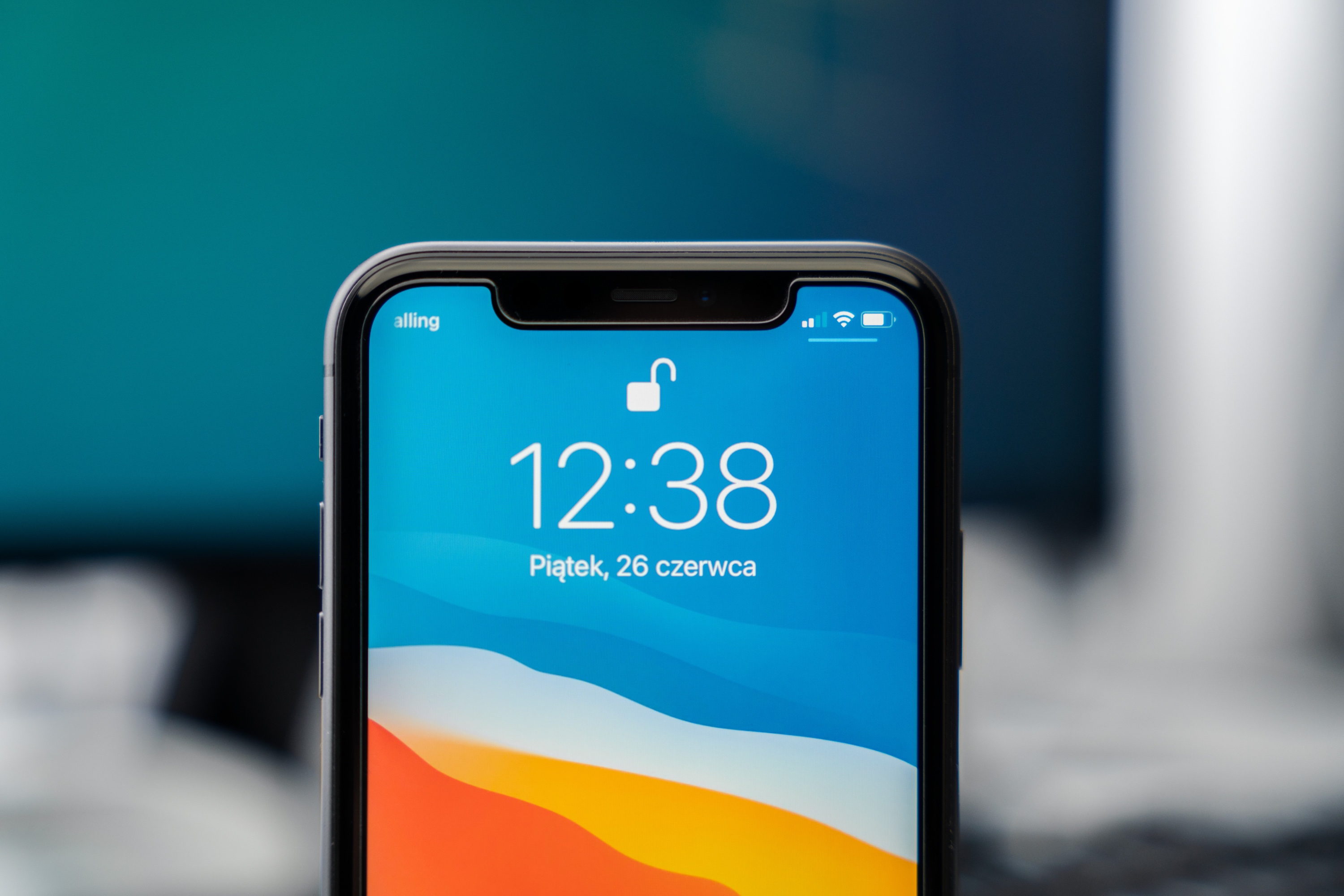
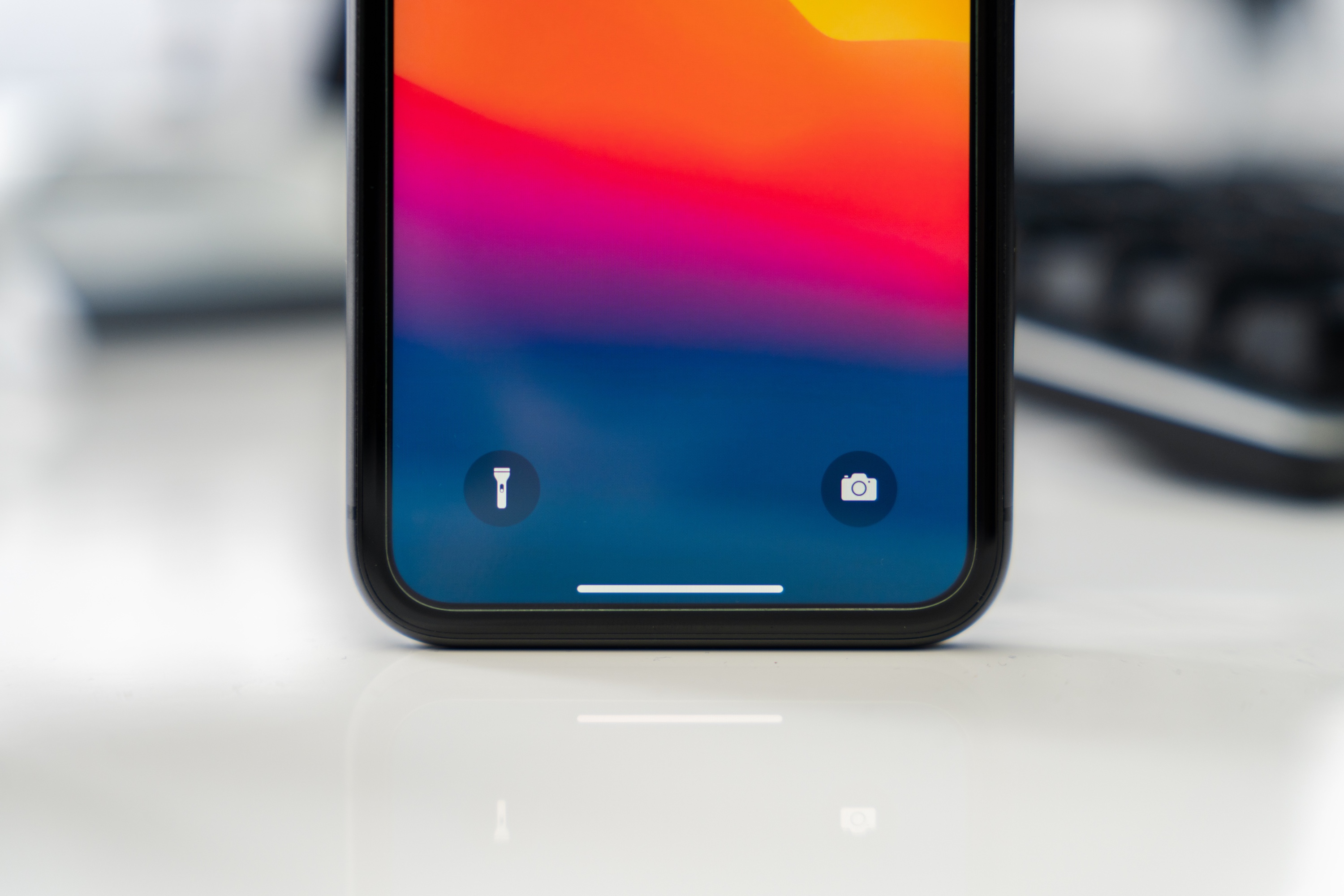
If you managed to get close to it – heartfelt congratulations, let us know in the comments: we will prepare a diploma for a certified glass applier, which will undoubtedly earn respect and admiration among family and friends. However, if something went wrong along the way – don’t worry, next time you’ll learn from it. 🙂 Practice makes perfect!
Leave a Reply